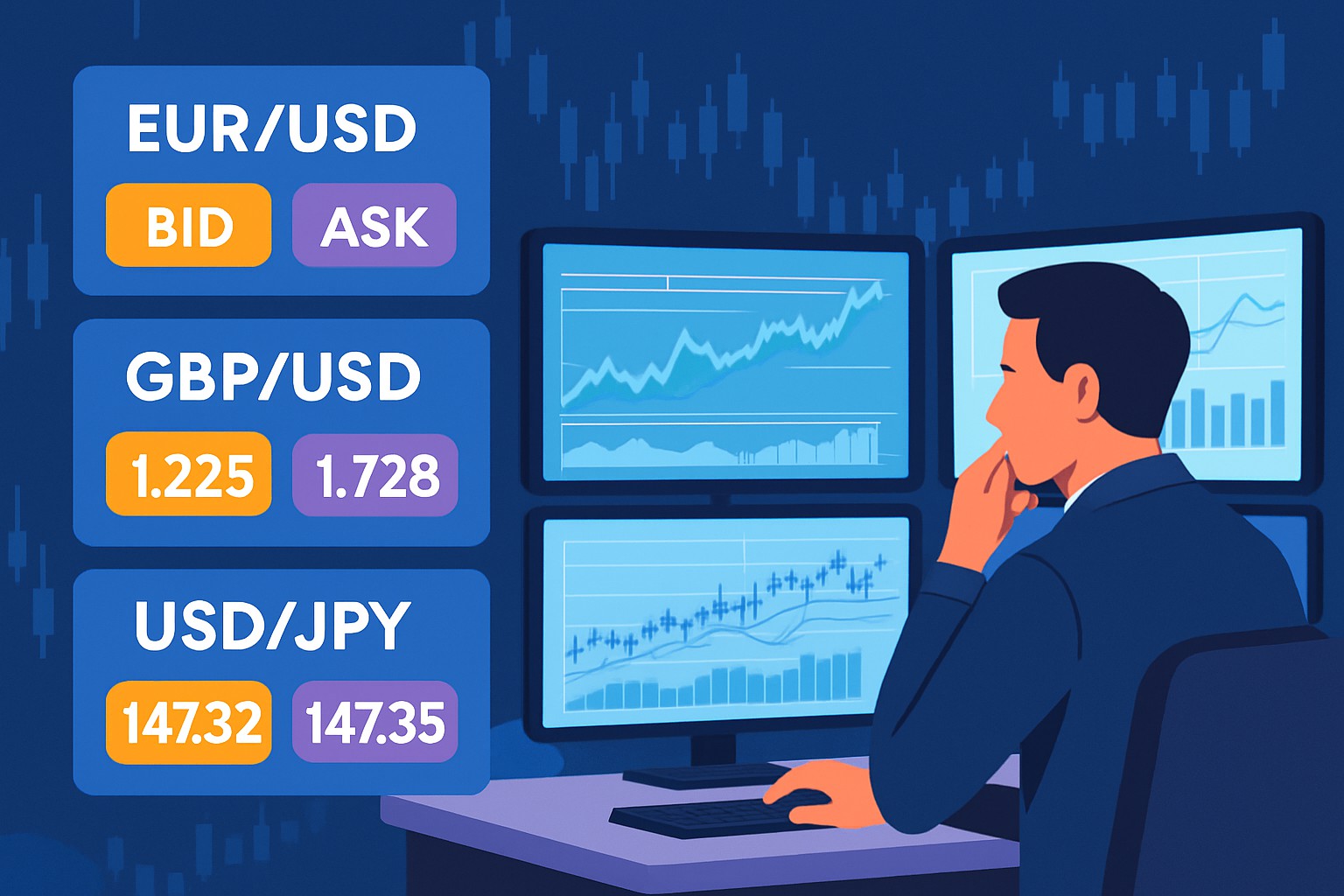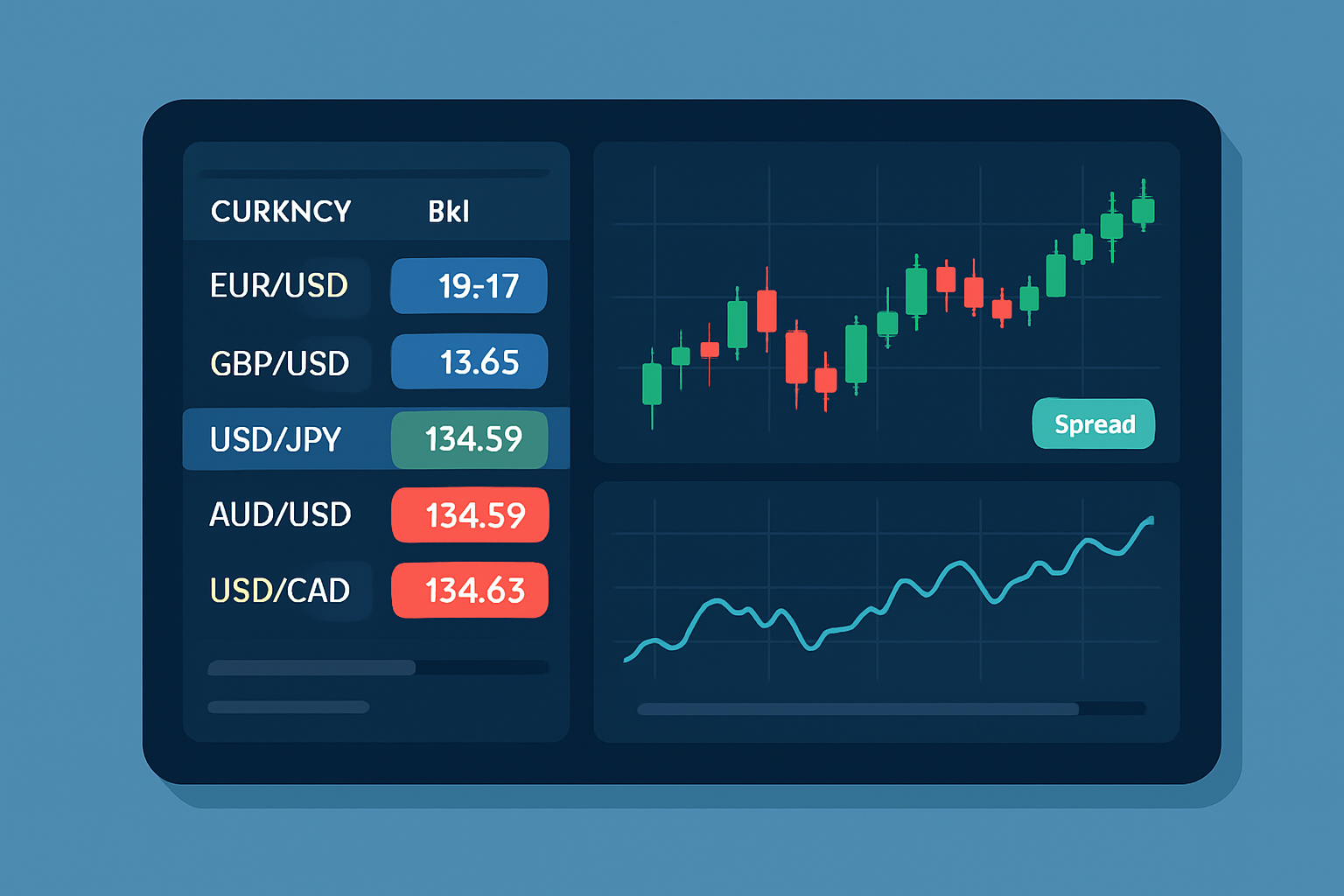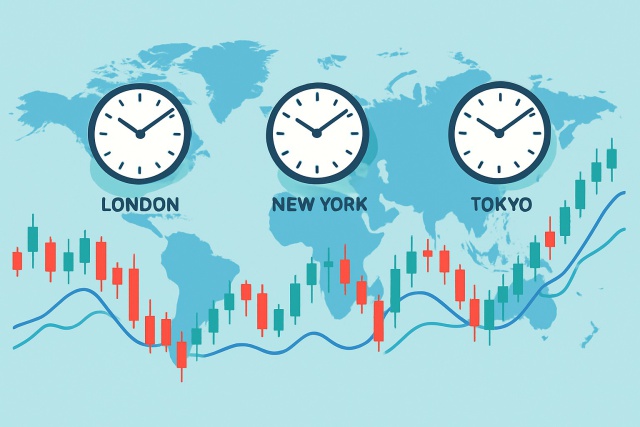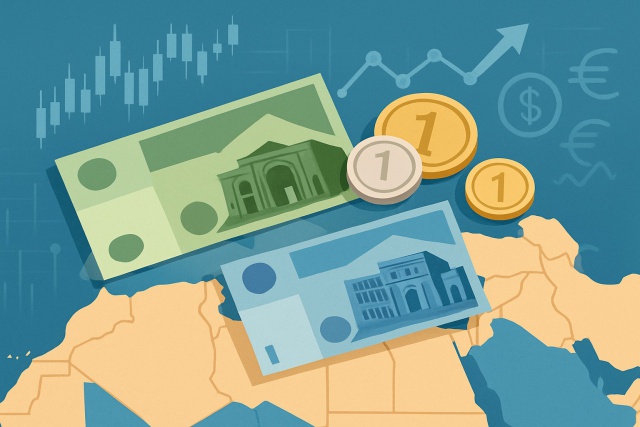
What is Foreign Exchange Trading Hours?
Discover the definitive guide to foreign exchange trading hours. Learn how global market sessions in...

In the fast-moving world of forex trading getting a clear handle on the bid price and ask price is vital for smart trading decisions. These two prices are at the heart of every trade and show the price at which you can buy or sell a currency pair at any moment. This article breaks down these essential concepts by explaining what they mean, why they matter, and how they can shape your trading experience.
The bid price is basically the highest amount a buyer is willing to throw on the table for a currency, while the ask price reveals the lowest amount a seller is willing to accept without breaking a sweat.
Picture a bustling local marketplace where sellers proudly flaunt their asking price, and buyers shout out the highest amount they are ready to throw on the table. The bid price is essentially the buyer’s offer, while the ask price is the seller’s little price tag.
Bid and ask prices in forex are constantly shaped by the hustle and bustle of market participants working through their trading platforms. As buyers and sellers throw in their orders, the platform quickly adjusts the bid and ask prices to reflect the real-time market vibe.
Market participants like banks, institutional traders and retail clients put forward bid and ask prices based on how eager they are to buy or sell currencies—each with their own motivation and timing.
Liquidity providers include brokers and market makers. They supply the necessary volume of currencies while setting prices that stay competitive in a fast-moving market.
Traders then jump in and place buy orders at the ask price and sell orders at the bid price. They execute their moves through trading platforms that feel like a high-stakes dance.
The gap between the bid and ask prices, known as the spread, represents the cost of trading. This spread isn’t static and tends to bounce around depending on the mood of the market and current conditions.
Brokers and market makers play a key role in shaping the bid and ask prices you see every day. Brokers round up prices from various liquidity providers, aiming to offer the best possible rates—kind of like hustling through a market to find the freshest deals. Market makers actively toss out bid and ask prices to keep things humming along, earning their keep from the spread in between. Big banks and other liquidity providers pitch in with hefty volumes that help keep prices steady, acting like the quiet but steady hands on the wheel.
The spread is the gap between the bid and ask prices and represents your trading cost. When the spread is tight you pay lower expenses but if it swings wide you pay more every time you make a trade.
| Spread Type | Example (EUR/USD) | Impact on Trading | Typical Spread Size (Pips) |
|---|---|---|---|
| Tight Spread | 1.1050 / 1.1051 | Helps keep your transaction costs nice and low, which usually plays in favor of scalpers and traders who are in and out like clockwork | 0.1 to 1.0 |
| Wide Spread | 1.1050 / 1.1070 | Can really eat into your profits, making quick trades less appealing and more costly to pull off | 5.0 or higher |
| Medium Spread | 1.1050 / 1.1055 | Strikes a decent balance, perfect for those who trade now and then without burning a hole in their wallet | 1.0 to 3.0 |
The spread's width can swing quite a bit depending on a few key factors. Currency pairs with high liquidity like EUR/USD generally come with tighter spreads—they’re the popular kids on the block. On the flip side, exotic pairs that don’t see much action tend to have wider spreads. This makes you pay a little extra for the privilege. When markets decide to throw a tantrum and get volatile, spreads usually stretch out since liquidity can vanish in a heartbeat. And let’s not forget your broker choice—market makers and ECN brokers each play the game differently.
Imagine EUR/USD has a bid price of 1.1200 and an ask price of 1.1203. When you jump in to buy EUR/USD, you’ll be paying the ask price of 1.1203 upfront. If you decide to sell right away—maybe impatience got the better of you—you’ll only get the bid price of 1.1200. That tiny 3-pip gap? That’s your initial trading cost, commonly known as the spread. If the price later nudges above 1.1203, that’s when the real fun begins and you might just turn a tidy profit by selling at the higher bid.
"Think of bid and ask prices like haggling at your local flea market. Sellers throw out their asking price, buyers throw back their offer, and a deal gets nailed down when both sides give a little ground. This kind of back-and-forth dance is pretty much the heartbeat of how the forex market ticks."
Many traders often fall into the trap of thinking that bid and ask prices stay fixed or locked in place no matter what’s happening in the market. In reality these prices are constantly on the move and nudged around by the ever-changing forces of supply and demand.
Keeping a close watch on bid and ask prices and the spreads can help traders spot sweet spots to jump in or out of trades, manage costs more effectively, and get a feel for the overall market mood.
Choosing the right broker and platform can make a world of difference when working with bid price and ask price dynamics. It’s usually a smart move to go for brokers who provide clear market data with no-nonsense bid and ask quotes and tight spreads that won’t eat into your profits. Platforms like TradingView and TrendSpider offer slick advanced charting tools and live price feeds that help traders get a clearer picture of those bid-ask dynamics. TradingView shines with its easy-to-use interface and sharp visualizations. It makes it easy for traders—whether you are a rookie or a seasoned pro—to keep an eye on spread fluctuations and price swings. Meanwhile, TrendSpider’s automated analysis and customizable indicators act like a helpful market buddy, nudging you about key levels where bid and ask prices dance around.

Forex trading platform interface displaying bid price, ask price, and spread in real time
Are you tired of juggling multiple tools for your trading needs? TradingView is the all-in-one platform that streamlines your analysis and decision-making.
With its powerful charting capabilities, real-time data, and vibrant community, TradingView empowers traders like you to stay ahead of the market. Join thousands who trust TradingView for their trading success.
As a dedicated trader, you know the power of technical analysis in navigating the financial markets. TrendSpider is the cutting-edge tool you need to take your trading strategies to new heights. With its advanced charting capabilities and automated pattern recognition, TrendSpider empowers you to make informed decisions faster.
17 posts written
Born in Athens, Ariadne Petrou is a leading expert in behavioral finance, exploring the psychological factors that influence trading decisions and market dynamics.
Read Articles
Discover the definitive guide to foreign exchange trading hours. Learn how global market sessions in...

Understand the key drivers behind Myanmar currency fluctuations in forex trading, from domestic refo...

Discover everything about forex market hours in this definitive guide. Understand session timings, o...

Discover how the Jordanian dinar anchors Jordan’s economy and regional trade. This article breaks do...
